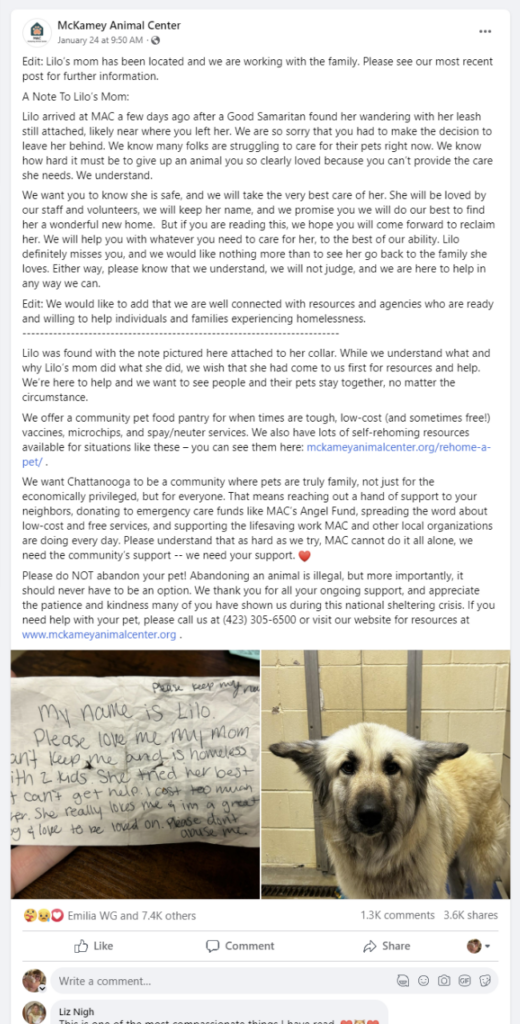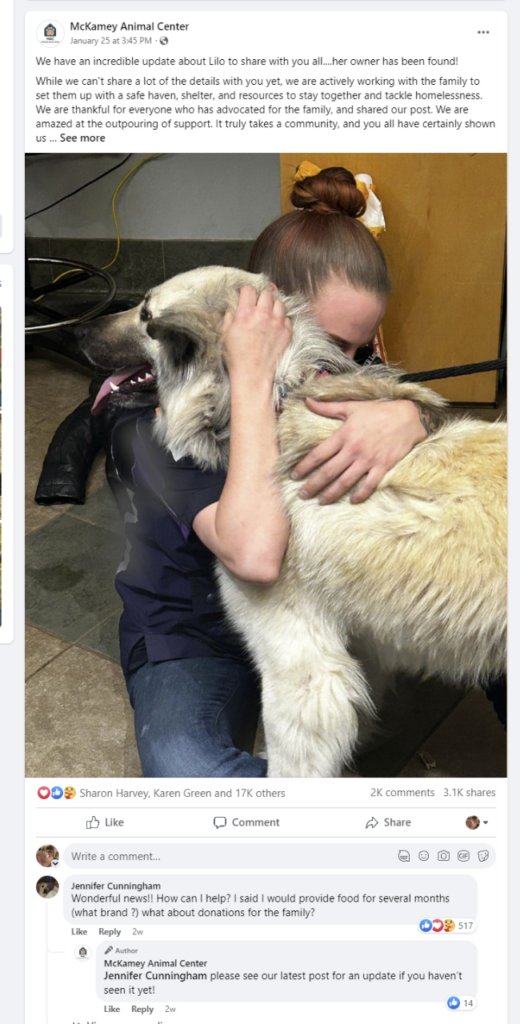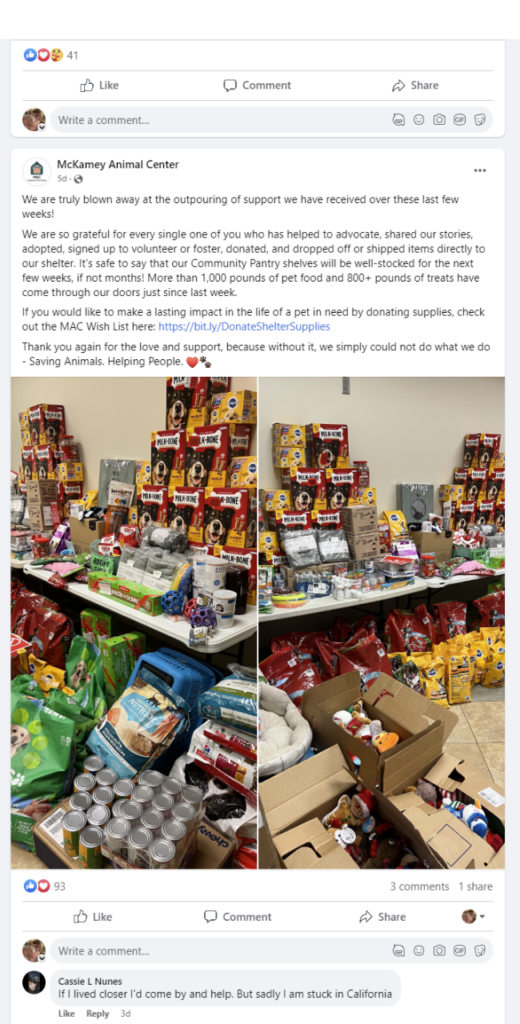Volume 1, Issue 4
February 14, 2023

In This Issue: Year in Review | Sniptember | Open Arms | Vet Shortage | PetHelpFinder.org Goes Live
Plus: All New All Call Format | Paws to Appreciate | Updated ASV Guidelines | We Dream Different
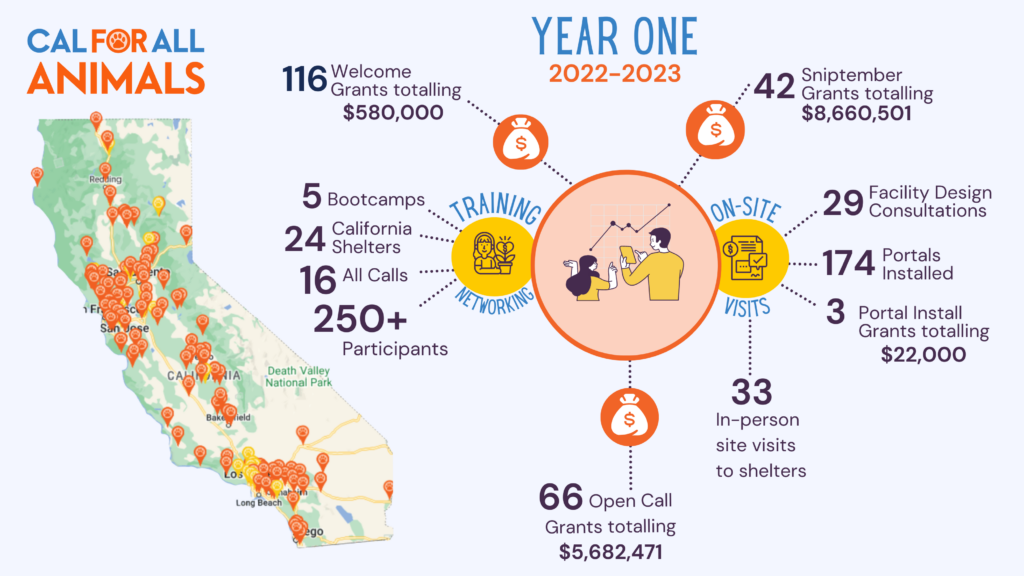
California for All Animals Year in Review with Nadia Oseguera
On February 14, 2022, California for All Animals launched with Welcome Grants for animal shelters and an invitation for shelters, partner organizations, and allies to join forces to achieve our shared goal of matching every animal in need with the right outcome through the right care, delivered in the right place and at the right time. We invited Program Manager Nadia Oseguera to reflect on the first year of Cal for All Animals and share more about what’s coming in 2023.
Cal for All Animals awarded over $15 million to shelters and animal control agencies in 2022. What difference do you think this will make for California shelters and communities, and for people and pets?
I fully recognize that sustainable change takes time, but $15 million means that shelters can turn their ideas into action. I joined the team in the middle of the Sniptember spay/neuter-focused grant cycle. I immediately dove into researching low-cost and free spay/neuter services across California and meeting with organizations to hear about their proposals. We awarded nearly $10 million in funding for spay/neuter projects. For some the funding meant they could catch up on a backlog of intact animals; for others it meant getting the veterinary staff support they needed, and for other organizations it meant extending much needed low-cost or free services to their community. I’m now in the process of checking in with organizations who were awarded funding in the spring 2022 Open Grants cycle. Those grants enabled organizations to start innovative programs, and shelters placed a big focus on community partnerships — from programming centered on foster care, community cats or community engagement.
What can we look forward to in the year ahead?
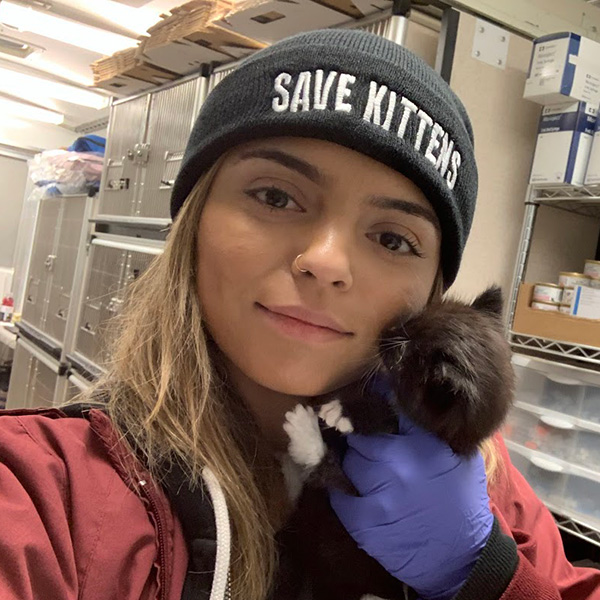
This year we’re recognizing how crucial it is to focus on breaking barriers and building bonds between pets and people and within our communities, inside the shelter and out. No matter our circumstances or individual differences, we all want to see animals thrive in their homes and with their people. We know that organizations can bring more pets and people together by building trust in the community and by ensuring all Californians — regardless of age or race — can share our love with a pet. We’re supporting shelters with the funding and tools needed to remove barriers to live outcomes one incremental, powerful change at a time.
Why is the focus on removing barriers so important?
Barrier-busting is all about removing the roadblocks that get in the way of keeping people and pets together. Barrier-free processes enable organizations to preserve or facilitate relationships between pets and people via foster care, adoption or return to home. I always go back to the approach that has guided my work: If people want to help, whether through adoption, fostering, or volunteering, I want to make that possible for them. Barrier-free processes also require trust in the community and prioritize racial equity, because Black, Indigenous and people of color who love their pets are most often harmed by barriers.
We put barriers in place with good intentions, but they contradict our desire to ensure that every animal in the shelter returns to their home or finds a new home as quickly as possible. For example, most organizations with adoption or foster applications aimed at ruling out less-than-“perfect” adopters or fosters are really trying to protect the animals in their care. But none of us are perfect, and all of us have love to give! This emphasis on looking for reasons to say no leads to animals spending a longer amount of time in the shelter, families not being reunited with their pets, hopeful adopters feeling unworthy of the companionship of a pet, and shelters needing to make difficult outcome decisions. Barriers not only harm the community but also animals and the dedicated people in shelters who care for them.
You’ve connected with shelters across the state over the last six months; what stands out?
Connecting with shelter leaders and their teams on an almost daily basis has reaffirmed my belief that the animal well-being space is just as much about the people as it is about the animals. A recurring theme is a desire to keep people and pets together. What that looks like might be different for each shelter — depending on their unique circumstances. However, I always leave every conversation feeling appreciation and gratitude for the front-line efforts to disrupt the status quo and do things differently for the sake of the animals and people in their communities.
No matter our circumstances or individual differences, we all want to see animals thrive in their homes and with their people.
Animal shelters, partner organizations, and the people and pets they work with are facing challenges, including the impacts of a state and nationwide veterinary shortage (see “Study Confirms Veterinary Shortage” in this newsletter). What gives you hope on difficult days?
I think it’s important to celebrate the wins — no matter how big or small. We know that access to care and veterinary staff shortages are a big challenge that we can’t solve overnight. While barrier-busting is a priority this year, we’re not losing sight of the access to care crisis or how the two intersect. In fact, I’m hopeful that shelters in communities most impacted by the access to care crisis can continue to find creative and collaborative ways to move forward by meeting people where they are, acknowledging their full humanity and recognizing the role they can play in improving animal well-being.
That means leaning further into the understanding that potential adopters may have trauma resulting from systemic harms experienced in their communities, but that trauma doesn’t define them. It means not denying a loving home to a cat or dog simply because we’re afraid that home might not meet a narrow, often unexamined ideal of perfection. It means removing more roadblocks that break the animal-human bond and building more partnerships with community members and organizations. This is already happening, and we celebrate and commend shelters for every baby step and every win along the way!
More than 8 Million Dollars for California Spay and Neuter During Sniptember!
Making up the spay/neuter ground lost to COVID is a daunting but necessary task…and necessity is the mother of invention. More than 40 shelters are in the process of receiving a combined $8M+ in Sniptember grants to pursue their innovative approaches to increasing spay/neuter capacity.
That innovation includes new partnerships within communities and collaborations reaching across the state.
For example, Marin Humane is teaming up with CAMP (Community Animal Medicine Project, formerly SNPLA) on a multi-year program to train veterinarians in High Quality High Volume Spay/Neuter (HQHVSN) surgical and clinical techniques.
In Los Angeles, Paws for Life K9 Rescue is joining with Companion Pet Partners, Los Angeles Animal Services (LAAS), California Department of Corrections and Rehabilitation (CDCR), and Annenberg PetSpace to launch a first-of-its-kind Vet Tech training program in the correctional setting. Grants are also supporting partnerships between the SF SPCA and the Central Valley, and Fresno Humane and Animal Balance. Hollister, Wasco, Monterey, Salinas and others will be increasing their S/N capacity via the SNIP Bus (Spay Neuter Imperative Project), a 501(c)(3) low-cost mobile spay and neuter clinic.
In all, we received 103 Sniptember proposals totaling $46,645,663.98, a number that nearly exceeds the entire budget for the five-year California for All Animals program. This astounding response not only reinforces the need for continued investment in building our spay/neuter capacity in the face of nationwide veterinarian shortages; it’s also a testament to shelters’ and partner organizations’ creativity and commitment when it comes to expanding opportunities for pets and people in their communities.
Record Number of California Organizations Are Up for the Open Arms Challenge
As part of our yearlong focus on barrier busting and bond building, California for All Animals joined with 21 national organizations to invite shelters, foster-based organizations, and public charities focused on keeping pets and people together to join the 2023 Open Arms Challenge.
California really stepped up, with 106 orgs submitting applications. They’ll spend March prepping (for example, by updating procedures and policies and/or training staff and volunteers) and April implementing their newly more welcoming practices.
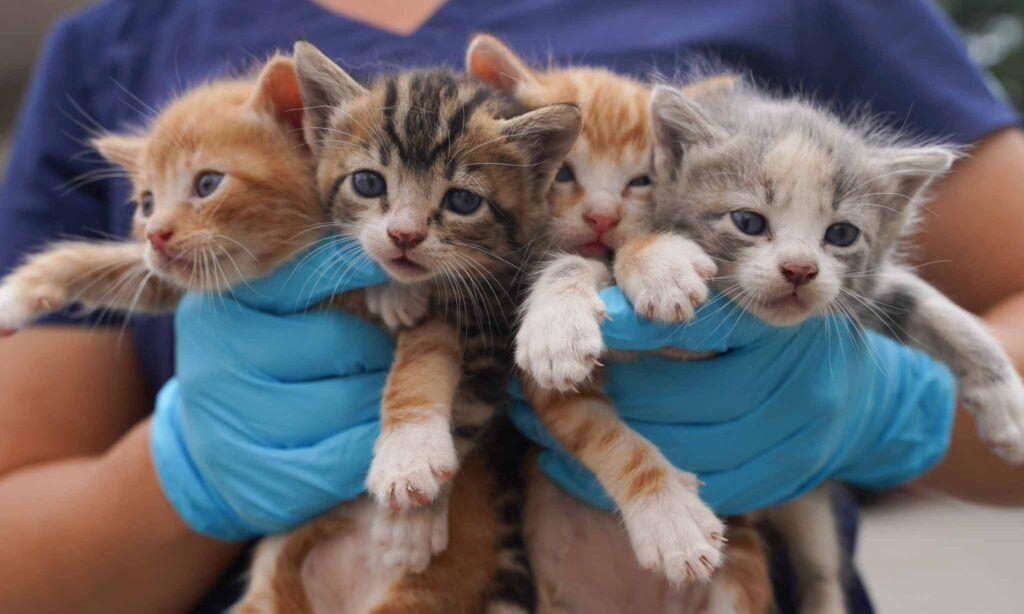
Study Confirms Veterinary Shortage
More than 344,000 California shelter animals do not have adequate access to veterinary care staff, according to a recent survey that highlights how veterinarian shortages are profoundly impacting California’s most vulnerable animals. Shelters are becoming overcrowded, illness is rising, and adoptable animals are being euthanized.
The study, released January 31, was conducted by the SF SPCA in partnership with the UC-Davis Koret Shelter Medicine Program, CalAnimals, University of Tennessee Pet Health Equity Program, Humane Society of Silicon Valley, and San Diego Humane Society and was made possible through a California for All Animals grant.
The shortage of veterinarians and RVTs means 25% of shelters are unable to provide essential veterinary care and 68% of shelters cannot consistently provide complete care to treat conditions commonly seen in shelters, such as fractures, eye injuries, and dental problems.
Read more details in the press release on sheltermedicine.com.
The survey results reveal the scope and urgency of the crisis and underscore the need for all Californians to come together to address it. Contact your local and state representatives to advocate for long term solutions in addition to direct funding. This could include expanding the training pipeline for veterinary professionals at all levels, increasing the availability of retraining (e.g., specific to spay/neuter) for veterinarians who have been out of the workforce, streamlining licensing practices to allow greater mobility into the state, expanding the role of registered veterinary technicians, and considering the potential of an appropriately trained and licensed mid-level practitioner similar to a Physician’s Assistant in human medicine.
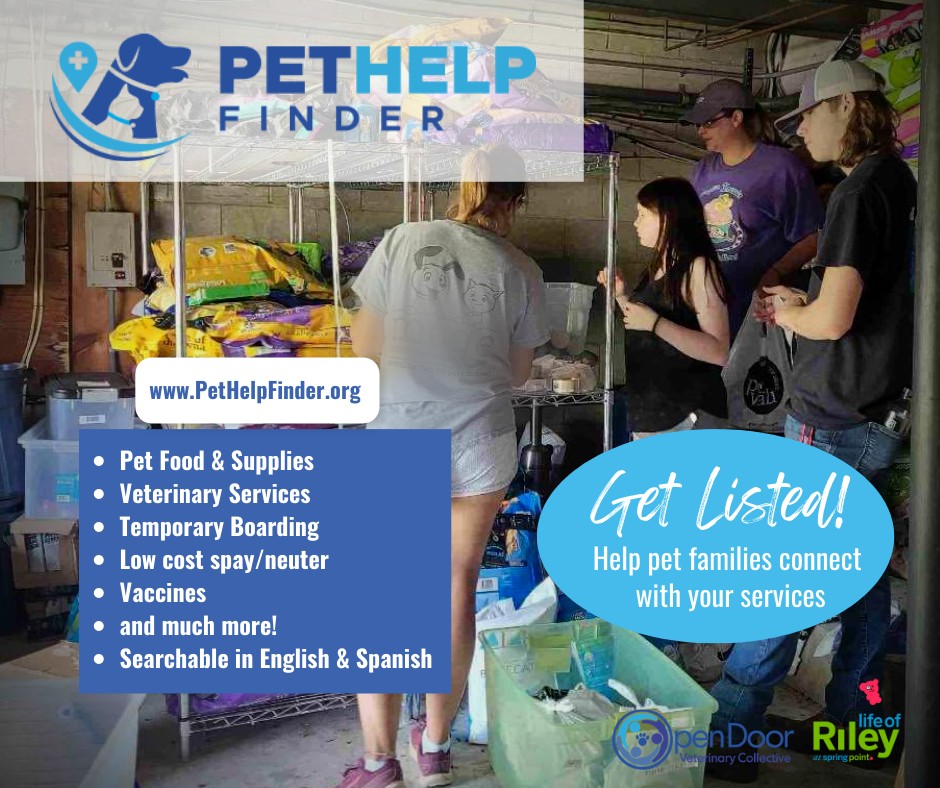
PetHelpFinder.org
PetHelpFinder.org is finally here! If you are an organization that offers financially friendly pet services, this was built for YOU!
Over 1,500 providers are already connected to this easy to use, searchable site. List your services and events and connect with pet families looking for you all in one convenient location. You can even use your calendar to announce vaccine clinics or offsite pet food distribution days.
PetHelpFinder.org is powered by Open Door Veterinary Collective, a Maddie’s® Million Pet Challenge Partner.
New Year, New All Call Format
You’re invited to the new All Call experience—same day, same time, different style. Inspired by your feedback, our Zoom community calls have transformed into two tracks.
Join us twice a month at 2 p.m. on the first and third Tuesdays, or pick the track that fits you and your schedule best.
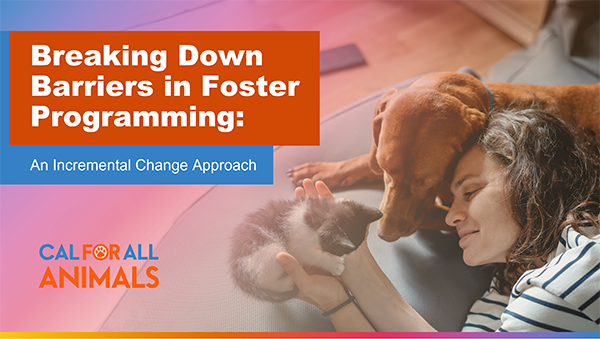
First Tuesday calls will be operations-focused and topic-driven, featuring a short presentation with time for discussion and Q&A.
Third Tuesday calls will continue to lean in to your coaching questions, with space to chat in breakout rooms and as a larger group.
On February 21, we’ll be discussing questions related to removing barriers to fostering; sign up to preview call topics and receive related resources and recaps.
The heart of the calls remains the same: you. Register and grab some time to connect, collaborate and celebrate progress with your California colleagues.
Paws to Appreciate
If you’ve opened the pages of the New York Times or turned on CBS Mornings, or spent less than a minute in your social feeds lately, you’ve likely seen the story of Madeline and her unicorn or Lilo’s reunification with her family. One thing is clear: we’re hungry for a different type of storytelling, one that centers people with their pets and lifts up the human-animal bond. If the story of Lilo and her family told by the McKamey Animal Center of Tennessee is any indication, compassion-forward care is a value that is universally shared and monumentally supported. Check out the food pantry bounty delivered by supporters far and wide in response to this heartwarming story.
Updated ASV Guidelines Provide a Roadmap to the Right Care
Next up for your shelter team book club: More than a decade after the publication of the Association of Shelter Veterinarian’s Guidelines for Standards of Care in Animal Shelters, this foundational document has received a big update.
“We worked hard to consider implications on community well-being, other stakeholders and staff,” Chumkee Aziz, DVM, said. “Our hope is that the Guidelines provide shelters with updated standards in animal sheltering, while encouraging shelters to also focus on equitably supporting their community and keeping pets in homes.”
The second edition expands the basis for capacity for care and core ethical framework for animal well-being from the Five Freedoms to the Five Domains. The Five Domains go a step beyond the Five Freedoms to emphasize that animals deserve not only freedom from negative experiences while in the shelter, but also positive experiences that contribute to overall mental and physical well-being.
Download the Guidelines for Standards of Care in Animal Shelters, 2nd Edition (8MB PDF), and look for a checklist of key actionable statements coming soon.
Mapping the Movement
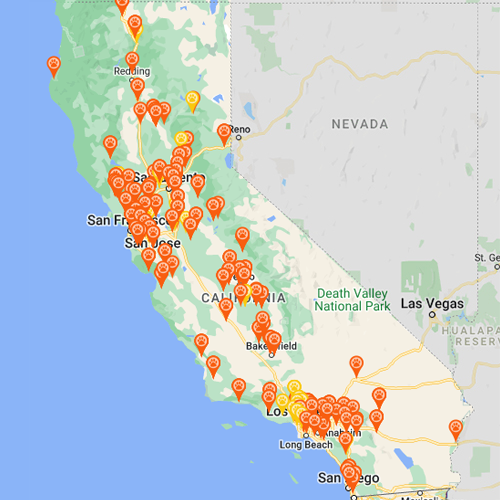
Notice anyone missing? Tell them about California for All Animals!

